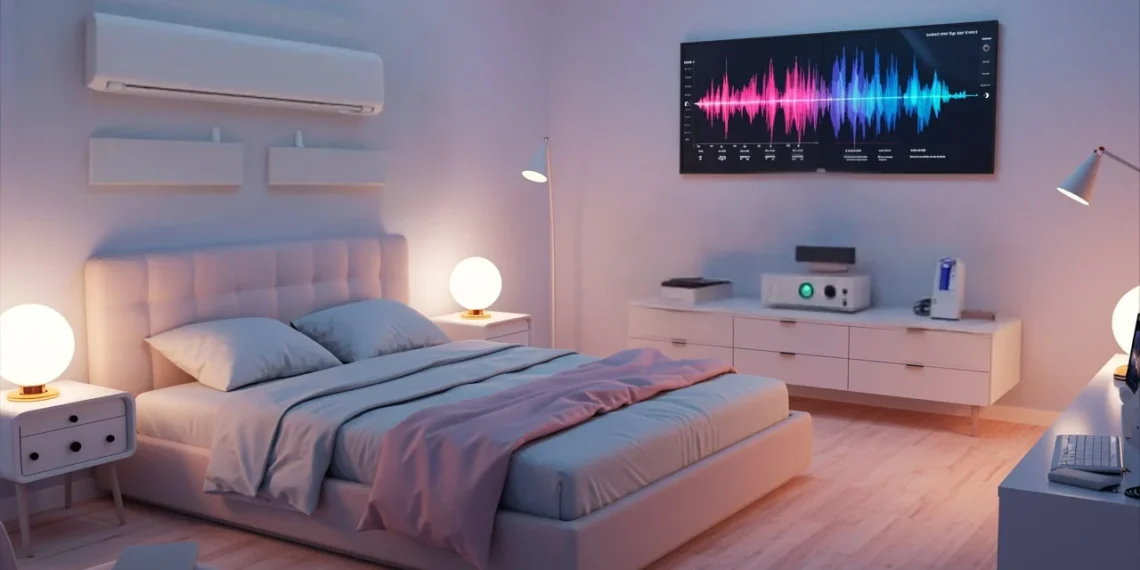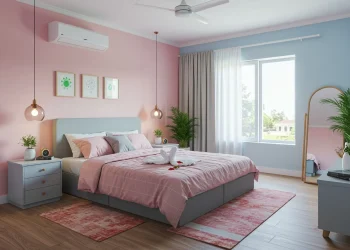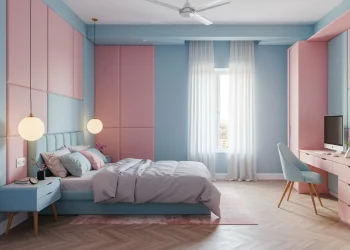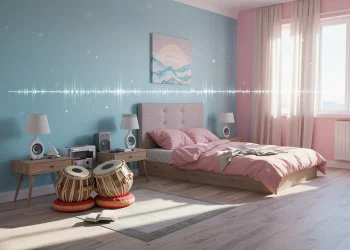Have you ever wondered why some people swear by the gentle hum of white noise while others find deeper peace in the rumbling embrace of brown noise? The world of sleep sounds extends far beyond simple background noise, encompassing a sophisticated spectrum of audio frequencies that can dramatically impact your sleep quality. Understanding the technical differences between these noise types isn’t just academic curiosity—it’s the key to unlocking your personal pathway to better rest.
In our modern world, where sleep disruption has become increasingly common, choosing the right type of sleep sound can be the difference between tossing and turning and experiencing the deep, restorative sleep your body craves. Whether you’re dealing with urban noise pollution, an overactive mind, or simply seeking to optimize your sleep environment, the science of color-coded noise offers evidence-based solutions tailored to your unique needs.
Understanding the Technical Differences Between Noise Types
The foundation of effective sleep sound therapy lies in understanding how different noise colors distribute their energy across various frequencies. Think of sound frequencies like colors in a rainbow—each “color” of noise emphasizes different parts of the audio spectrum, creating distinct auditory experiences that affect your brain and nervous system in unique ways.
White noise represents the most familiar and widely recognized type of sleep sound. From a technical standpoint, white noise contains equal energy across all audible frequencies, creating a consistent, steady sound that many describe as similar to radio static or a constant fan hum. This uniform frequency distribution means that white noise effectively masks sudden environmental sounds by providing consistent auditory coverage across the entire spectrum.
The technical characteristics of white noise make it particularly effective for environments with unpredictable sound interruptions. When your neighbor’s dog barks or a car door slams outside, white noise acts as an acoustic blanket, maintaining consistent sound levels that prevent these sudden changes from jolting your nervous system out of its relaxed state.
Pink noise takes a more sophisticated approach to frequency distribution, emphasizing lower frequencies while gradually reducing energy in higher frequency ranges. This creates a more balanced, natural-sounding audio experience that many listeners find more pleasant than white noise’s sometimes harsh uniformity. Pink noise occurs naturally in many environmental sounds—from steady rainfall to rustling leaves—which explains why these natural sounds feel so inherently soothing.
The technical genius of pink noise lies in its ability to mirror the natural frequency patterns that our brains have evolved to find calming. Research shows that pink noise can actually enhance slow-wave sleep, the deepest and most restorative stage of your sleep cycle, by synchronizing with your brain’s natural rhythms in ways that white noise cannot achieve.
Brown noise, also known as red noise, represents the deepest end of the sleep sound spectrum. This type of noise heavily emphasizes low frequencies while significantly reducing higher frequency content, creating rich, rumbling tones reminiscent of distant thunder, ocean waves, or heavy rainfall. The mathematical relationship in brown noise follows what scientists call a “Brownian motion” pattern, where energy decreases more dramatically as frequencies increase.
From a technical perspective, brown noise provides the most focused masking effect for low-frequency disturbances—those deep, penetrating sounds like traffic noise, HVAC systems, or upstairs neighbors walking around. The concentrated low-frequency energy in brown noise doesn’t just mask these disturbances; it can actually counteract them by providing competing acoustic information in the same frequency range.
What makes these technical differences practically significant is how your brain processes each type of noise during different sleep stages. While all three types can help mask disruptive sounds, their varying frequency emphasis means each interacts differently with your nervous system’s natural sleep progression.
Scientific Benefits of Each Sound Type for Sleep Enhancement
The growing body of scientific research on sleep sounds reveals fascinating insights into how different noise colors can optimize various aspects of your sleep experience. Understanding these evidence-based benefits helps you make informed decisions about which type of sleep sound might work best for your specific sleep challenges.
White noise research has demonstrated significant benefits for sleep onset and maintenance. A landmark study published in the journal Sleep Medicine found that participants using white noise fell asleep 38% faster than those sleeping in silence. The consistent frequency coverage of white noise appears to reduce the contrast between background environmental sounds and sudden noise intrusions, preventing the startle response that can disrupt sleep initiation.
Additionally, white noise has shown particular effectiveness for individuals with attention disorders or hyperactive minds. The consistent auditory input provides something for an overactive brain to focus on, reducing the tendency for racing thoughts that often prevent sleep onset. This makes white noise especially beneficial for urban professionals and wellness enthusiasts who struggle with stress-related sleep issues.
Pink noise benefits extend beyond simple sound masking into the realm of sleep quality enhancement. Groundbreaking research from Northwestern University demonstrated that pink noise can improve memory consolidation during sleep by enhancing slow-wave sleep patterns. Participants who listened to pink noise showed improved performance on memory tests the following day, suggesting that this sound type actively supports the brain’s natural restoration processes.
The natural frequency distribution of pink noise appears to synchronize with the brain’s default mode network, the neural system active during rest and introspection. This synchronization may explain why many people report feeling more refreshed and mentally clear after sleeping with pink noise, even when total sleep duration remains the same.
For families seeking sleep solutions, pink noise offers unique advantages. Its more balanced frequency profile makes it less likely to disturb light sleepers while still providing effective masking for common household sounds. This makes pink noise an excellent choice for parents who need sound masking without creating additional disruption for children.
Brown noise research, while newer in the field, reveals compelling benefits for deep sleep promotion and anxiety reduction. The low-frequency emphasis of brown noise appears to activate the parasympathetic nervous system more effectively than higher-frequency sounds, promoting the physiological state necessary for restorative sleep.
Preliminary studies suggest that brown noise may be particularly beneficial for individuals with anxiety disorders or trauma-related sleep issues. The deep, enveloping quality of brown noise seems to create a sense of acoustic security that helps calm an overactivated nervous system. This makes brown noise especially valuable for senior wellness seekers who may be dealing with age-related anxiety or individuals recovering from stressful life events.
Recent research also indicates that brown noise may help regulate cortisol levels during sleep, potentially improving hormonal balance and supporting the body’s natural circadian rhythms. While more research is needed to fully understand these mechanisms, early findings suggest that brown noise could offer benefits beyond simple sleep induction.
Personal Preference Assessment: Finding Your Ideal Sleep Sound
Determining which type of sleep sound will work best for you requires a systematic approach that considers your unique sleep challenges, environmental factors, and personal sensitivities. Rather than relying on trial and error, you can use evidence-based assessment techniques to identify your optimal sleep sound more efficiently.
Start by evaluating your primary sleep disruption sources. Do you live in an urban environment where sudden, high-pitched sounds like sirens or car alarms frequently wake you? White noise’s broad frequency coverage might be your best choice. Are you dealing with consistent low-frequency disturbances like traffic rumble or neighbor activities? Brown noise’s low-frequency emphasis could provide more targeted relief.
Consider your stress and anxiety levels. If you struggle with an overactive mind or work-related stress, the consistent, predictable nature of white noise might help quiet mental chatter. However, if your sleep issues stem from deeper anxiety or emotional stress, brown noise’s calming, enveloping quality might be more effective at activating your body’s relaxation response.
Assess your sensitivity to different sound characteristics. Some individuals find white noise too sharp or artificial-sounding, particularly those with sensitive hearing or audio processing sensitivities. If you generally prefer natural sounds like rain or ocean waves, pink or brown noise will likely feel more comfortable and sustainable for long-term use.
Think about your sleep partner’s needs. If you share a bed, consider that different people may respond better to different noise types. Pink noise often represents a good compromise, as its balanced frequency profile tends to be well-tolerated across different preferences while still providing effective masking benefits.
Evaluate your morning alertness patterns. Pay attention to how different types of sleep sounds affect your morning wake-up experience. Some people report feeling more naturally refreshed when using pink noise, possibly due to its positive effects on sleep quality rather than just sleep quantity.
To conduct your own assessment, try each noise type for at least three consecutive nights, keeping consistent other factors like bedtime, room temperature, and evening routines. Note not just how quickly you fall asleep, but also how you feel upon waking and throughout the following day.
Best Applications for Different Sleep Issues
Understanding which type of sleep sound works best for specific sleep challenges can help you target your approach more effectively. Different sleep issues often respond better to particular noise characteristics, allowing you to match your sound choice to your specific needs.
For insomnia and difficulty falling asleep, white noise often provides the most immediate benefits. Its consistent, predictable nature gives an overactive mind something neutral to focus on, reducing the tendency for anxious or racing thoughts that commonly prevent sleep onset. The broad frequency coverage also ensures that unexpected environmental sounds won’t break through your relaxation process just as you’re drifting off.
When dealing with frequent night wakings, consider the source of your disruptions. If you’re waking due to sudden environmental sounds, white noise’s masking properties can be invaluable. However, if you’re waking due to stress or anxiety, brown noise’s deeper, more comforting frequencies might help you return to sleep more quickly by maintaining a calmer nervous system state throughout the night.
For improving sleep quality and memory consolidation, pink noise emerges as the clear scientific choice. Research consistently shows that pink noise can enhance slow-wave sleep, the deepest and most restorative sleep stage. If you’re getting adequate sleep duration but still feeling tired during the day, pink noise might help you achieve more efficient, higher-quality rest.
Shift workers and those with irregular sleep schedules often benefit most from brown noise. The deep, consistent low frequencies can help signal to your body that it’s time to rest, even when sleeping during typically active hours. Brown noise’s ability to block out low-frequency daytime sounds like traffic and construction makes it particularly valuable for daytime sleep.
Families with children should consider pink noise as their primary option. Its natural sound profile is less likely to be disruptive while still providing effective masking for household activities. Pink noise can also help children develop better sleep associations with pleasant, natural-sounding audio environments.
Individuals with tinnitus or hearing sensitivities need careful consideration of their chosen sleep sound. White noise may exacerbate tinnitus symptoms for some people, while pink or brown noise’s more natural frequency distributions might provide relief without additional auditory stress.
Audio Equipment Recommendations for Optimal Sleep Sound Experience
The effectiveness of your chosen sleep sound depends significantly on the quality and characteristics of your audio equipment. Different noise types have specific requirements for optimal reproduction, and understanding these technical needs can dramatically improve your sleep sound experience.
For white noise reproduction, look for speakers or sound machines with flat frequency response across the audible spectrum. Since white noise contains equal energy at all frequencies, you need equipment that can accurately reproduce this broad range without emphasizing or diminishing particular frequency bands. Dedicated white noise machines often provide the most consistent results, as they’re specifically designed for this application.
Avoid using smartphone speakers for white noise, as their limited frequency range and small drivers can’t accurately reproduce the full spectrum needed for effective masking. Instead, consider a quality bedside speaker system or a dedicated sound machine with at least 20 watts of power for room-filling coverage.
Pink noise benefits from equipment with excellent midrange reproduction and smooth frequency transitions. Since pink noise emphasizes natural frequency patterns, speakers with good acoustic design become particularly important. Look for sound systems with larger drivers (at least 4-inch woofers) that can handle the balanced low and mid-frequency content that makes pink noise effective.
High-quality wireless speakers designed for music reproduction often excel at pink noise playback, as they’re engineered for the kind of natural frequency balance that pink noise embodies. Brands known for neutral, accurate sound reproduction typically provide the best pink noise experience.
Brown noise requires robust low-frequency reproduction capabilities. The deep, rumbling characteristics of brown noise demand speakers with substantial bass response and minimal distortion at low frequencies. Look for sound systems with dedicated subwoofers or large woofers (6-inch or larger) that can accurately reproduce frequencies below 100 Hz without strain.
Portable sound machines may struggle with brown noise reproduction due to their small drivers’ inability to move enough air for convincing low-frequency reproduction. For brown noise, investing in a quality speaker system with good bass extension will provide significantly better results than smaller, convenience-focused devices.
Volume considerations are crucial regardless of your chosen noise type. Sleep sounds should be played at levels between 50-60 decibels—loud enough to mask disruptive sounds but not so loud as to potentially damage hearing or prevent natural sleep transitions. Many dedicated sleep sound devices include automatic volume adjustment features that maintain optimal levels throughout the night.
Connectivity and convenience features can enhance your sleep sound experience. Look for devices with multiple connectivity options (Bluetooth, aux input, USB) and programmable timers. Some advanced units offer multiple noise types in one device, allowing you to experiment with different options or even transition between noise types during different sleep stages.
Conclusion: Your Path to Perfect Sleep Sounds
The journey to optimal sleep isn’t one-size-fits-all, and neither is your ideal sleep sound. Whether you find peace in white noise’s consistent embrace, pink noise’s natural balance, or brown noise’s deep comfort, the key is understanding how these different types of sleep sounds can work with your unique sleep needs and challenges.
Remember that finding your perfect sleep sound may require some experimentation, but the scientific foundation behind each noise type provides a roadmap for making informed choices. Start with the type that best matches your primary sleep challenges, use quality audio equipment for optimal reproduction, and give each option adequate time to demonstrate its benefits.
Your sleep environment is one of the most controllable factors in your overall wellness journey. By choosing the right type of sleep sound and implementing it with proper equipment and consistency, you’re taking a significant step toward the restorative, refreshing sleep that supports your fullest potential.
Ready to transform your sleep with the perfect sound solution? Explore our comprehensive collection of sleep sound devices and find the ideal audio companion for your nightly restoration. Sweet dreams await when you discover your perfect sleep sound match.







